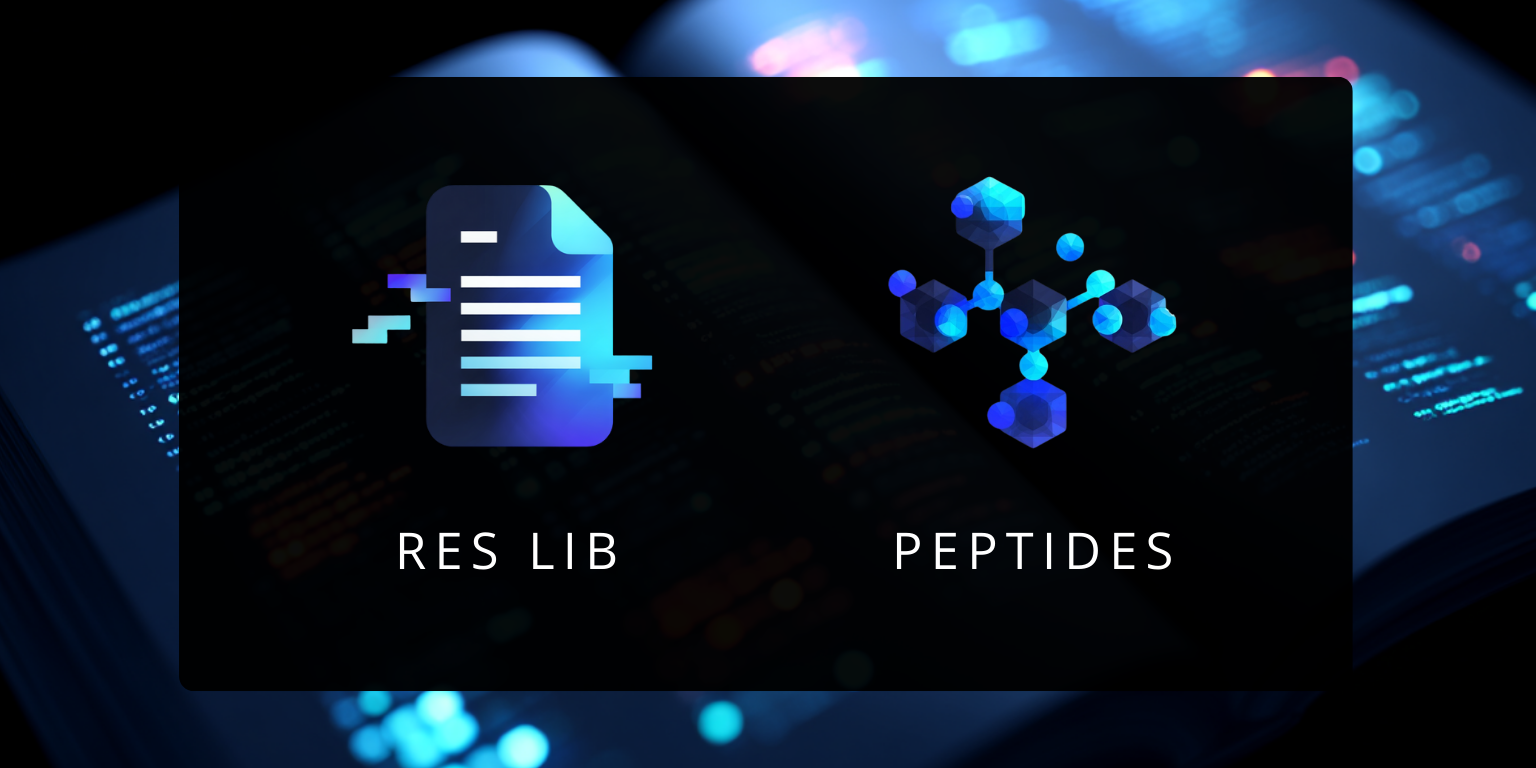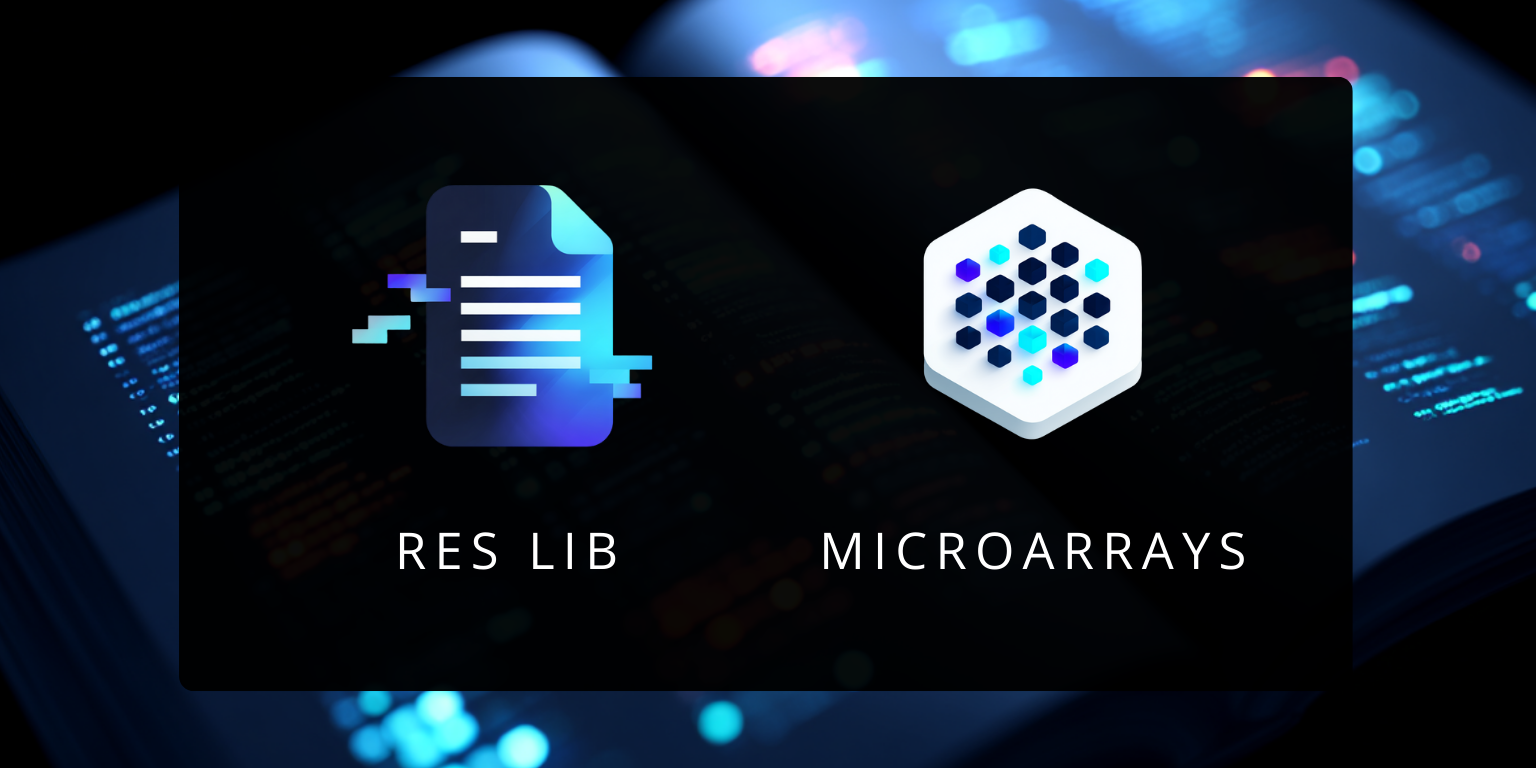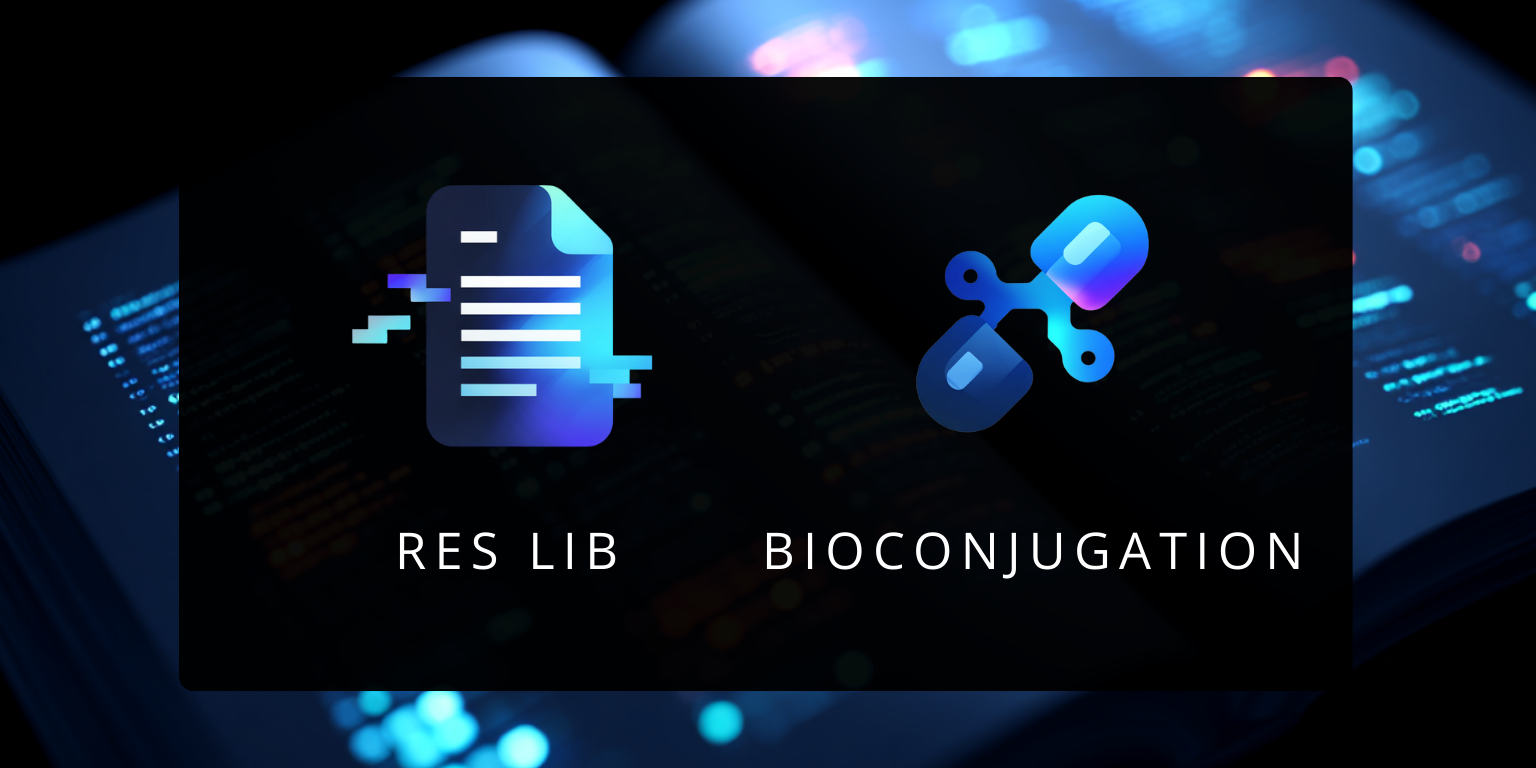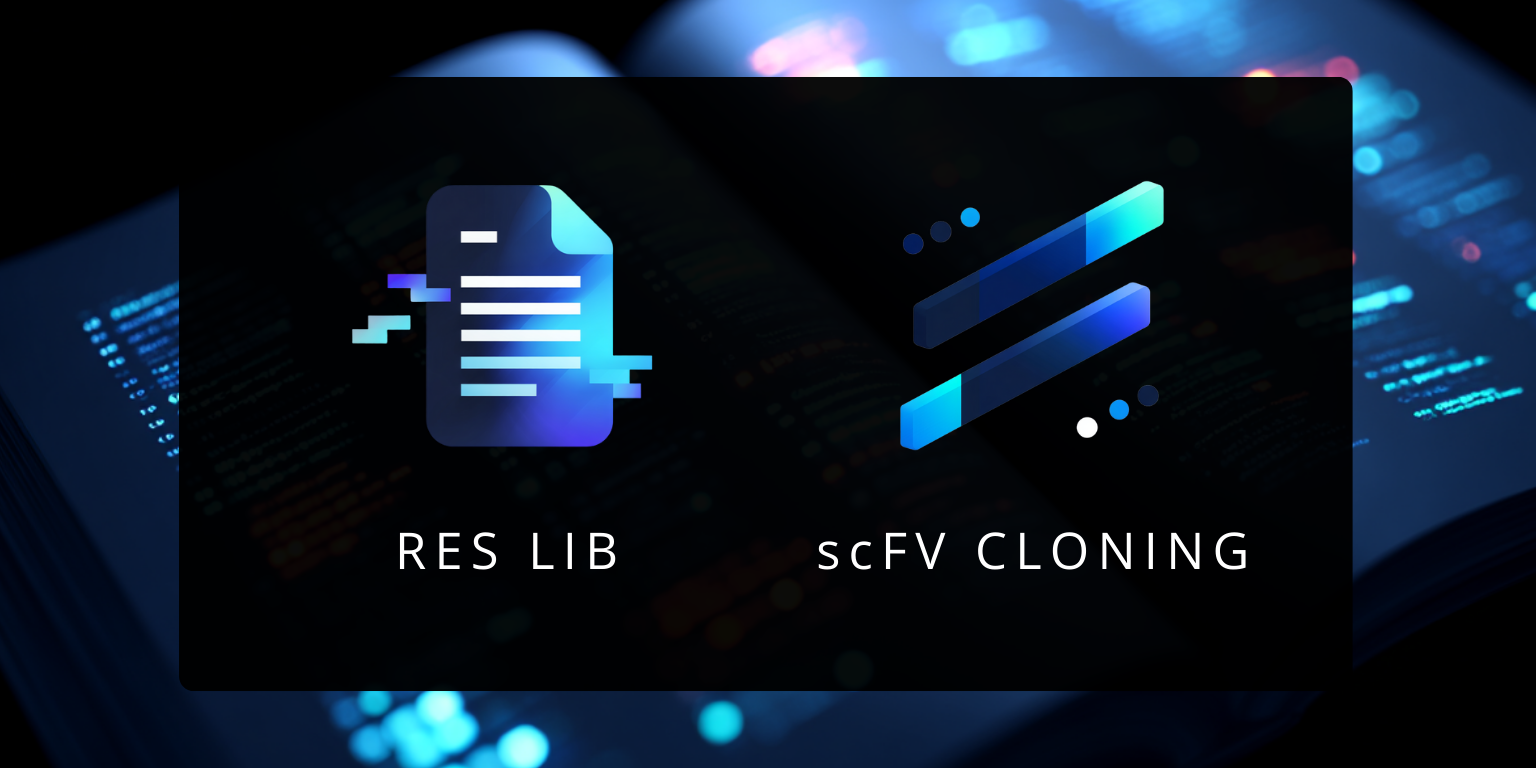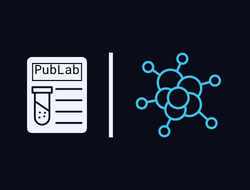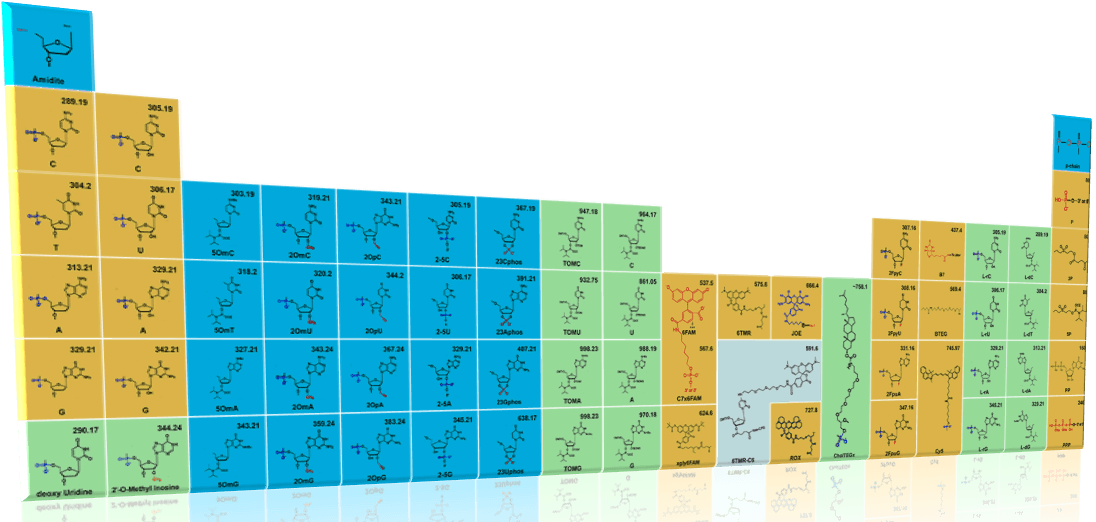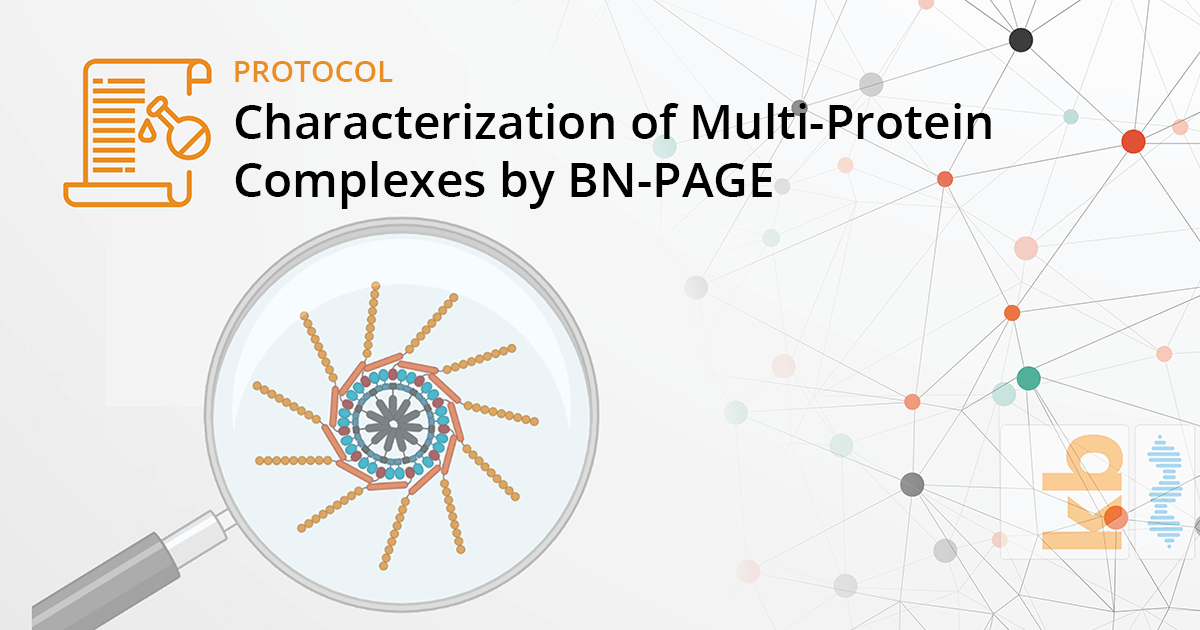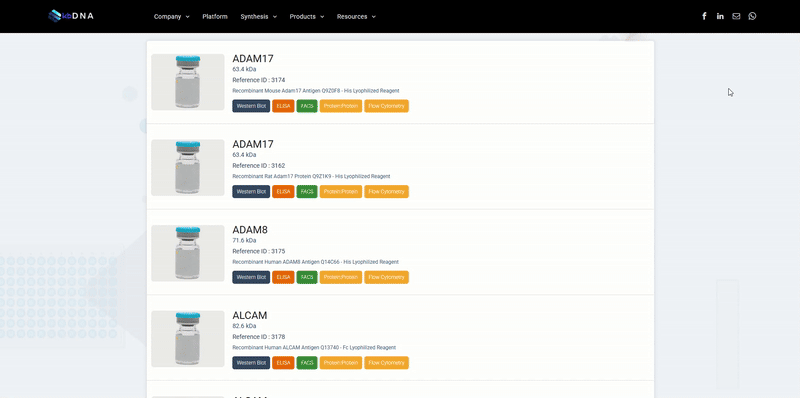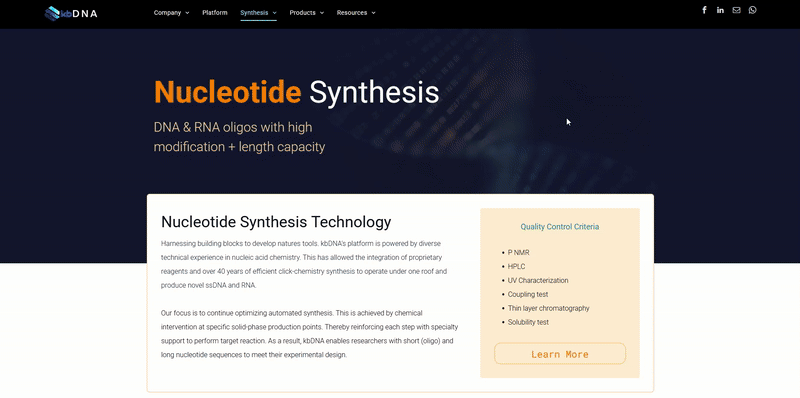Resource Library

The kbDNA Resource Library provides even more knowledge helping to bridge the gap between research labs and the manufacturing world. As part of our effort to enable the research, we have found reference material to be an important tool for scientists. Our library of E-Books and Reference materials have been carefully researched, and we have published them here so our researchers can benefit from instant, free access.
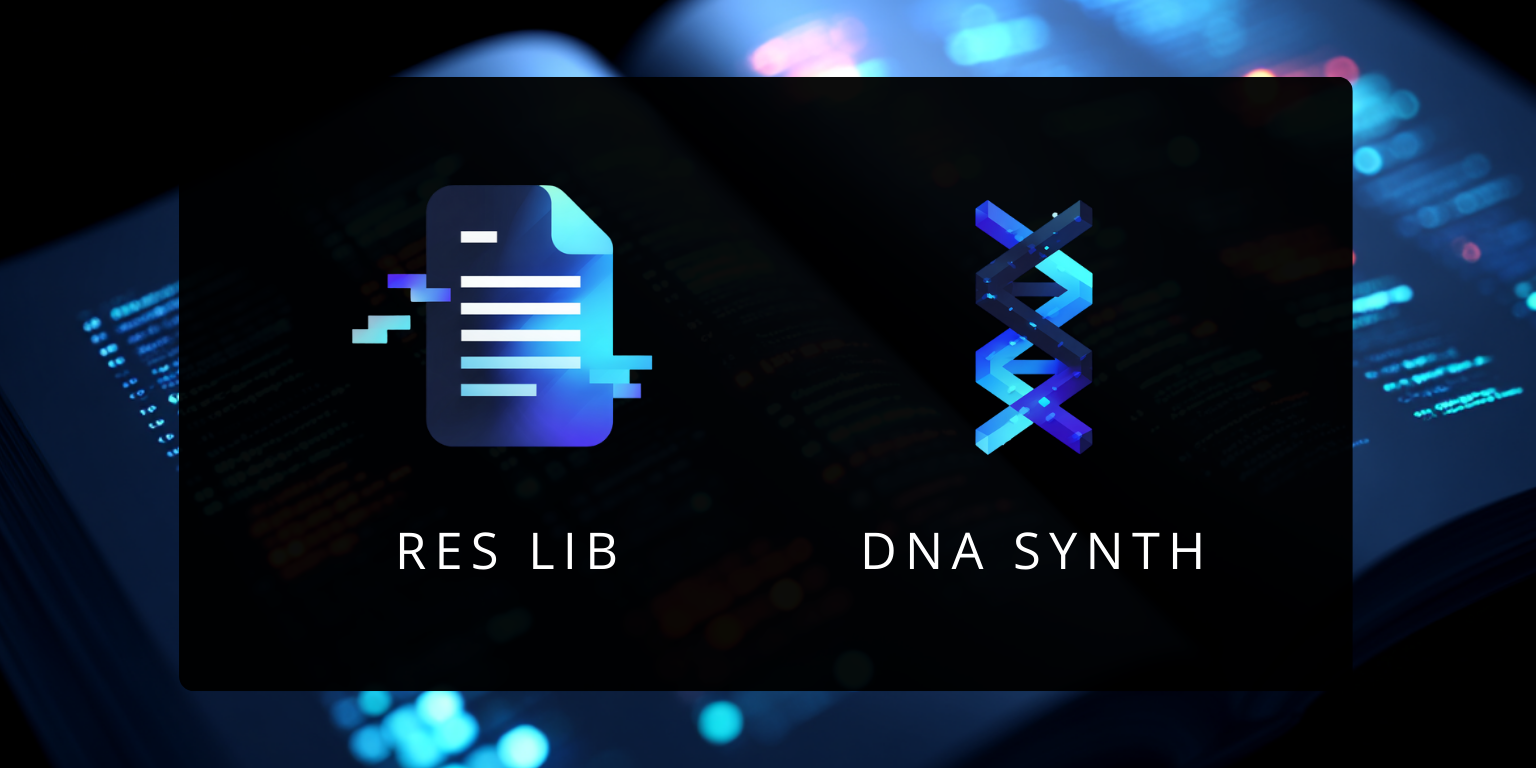
Along with an extensive selection of base-carrying phosphoramidites, our DNA synthesis toolbox includes; standard and mild 3’ base protection options with a variety of CPG supports, functional backbone modifications, duplex stabilizers and more. These compounds allow our synthesis to pursue challenging techniques such as 5’->3’ synthesis and heavy reinforcements to the nucleotides. Additional in-house compounds are categorized into their respective applications. Most notably chain termination for PCR/Sequence Utility, structural studies, DNA mutagenesis/repair, diagnostics, and therapeutics.
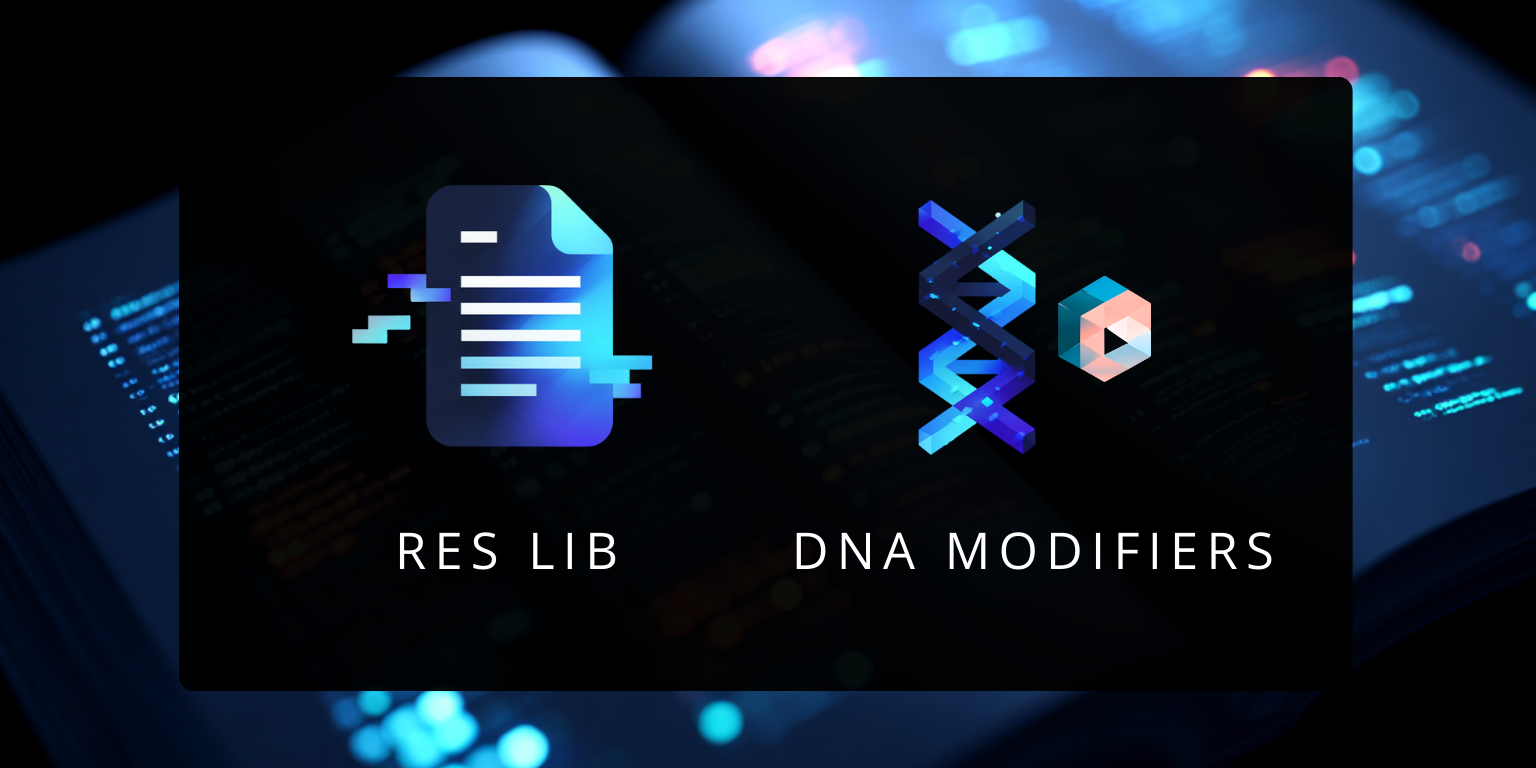
Modifying DNA during synthesis involves a bit of creativity along with untraditional chemistry throughout the synthesis workflow. Different classes of modifiers have grown over time, but the most tried and true begins with 3’ or 5’ amino modifiers and the use of spacers and “branching” modifications. This paved the way for introducing more elaborate modifiers into sequences, such as compounded functional groups and a wide array of labels.

Find your protein of interest using our novel catalog method. This guide offers an updated catalog on recombinant expression technology and features kbDNA's in-vivo protein products including key analytes for the following libraries: Biomarkers, Immune-targets,Hormones,Heat Shock,Cytokines,Infectious Disease,Glycobiology, Assay Proteins, biosimilars

